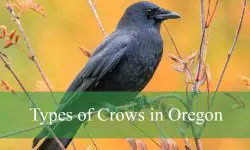Maryland hosts several dove species, bringing gentle coos and subtle charm to its fields, towns, and forests. From bustling cities to quiet countryside fields, these birds are a familiar sight to both casual observers and avid birdwatchers.
The most common doves, like the Mourning Dove, are easily recognized by their slender bodies and mournful calls, while non-native species such as the Eurasian Collared-Dove have become increasingly widespread across suburban areas. Rare visitors like the White-winged Dove occasionally grace the southern regions and coastal areas, surprising local bird enthusiasts.
Whether for backyard birdwatching or exploring Maryland’s parks and fields, learning to identify these doves by their plumage, size, and behavior can enrich your outdoor experience. This guide highlights four dove species in Maryland with detailed identification tips and helpful pictures.
Different Types of Doves Found in Maryland
Mourning Dove (Zenaida macroura)
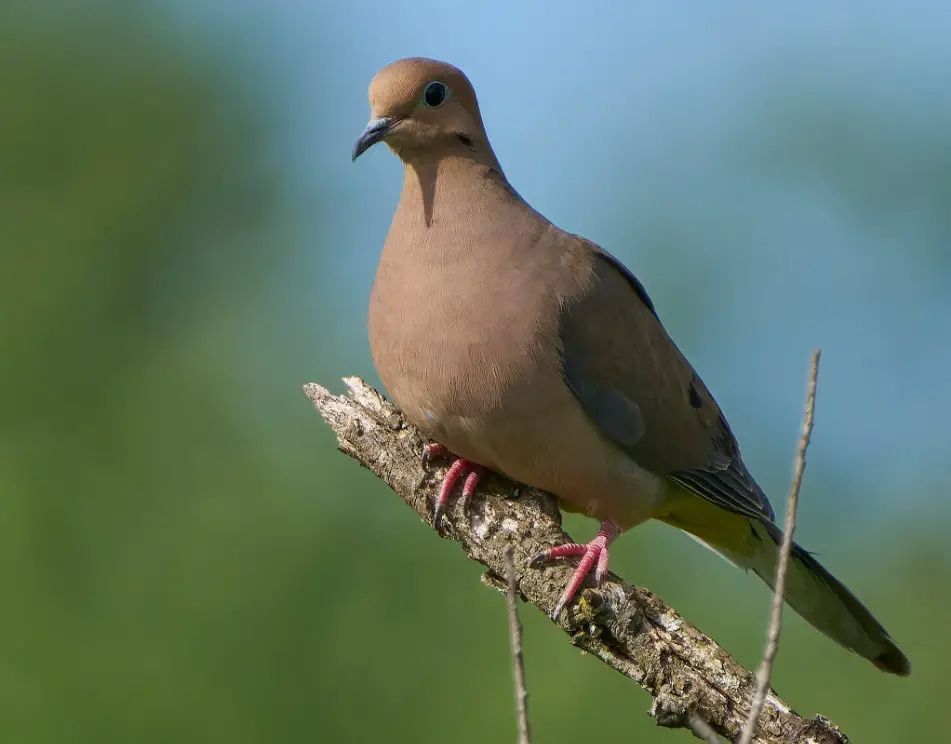
The Mourning Dove is Maryland’s most widespread and familiar dove. Recognizable by its slender, grayish-brown body, long pointed tail, and soft, mournful cooing, it’s a common sight in both urban and rural areas. Its black spots on the wings and the subtle pinkish hue on the breast make it easy to identify.
Mourning Doves are medium-sized, measuring about 12–14 inches in length with a wingspan of 17–18 inches. They are graceful in flight, often seen gliding in wide circles or swiftly flapping their wings before soaring high. Their delicate build and pointed tail give them a distinctive silhouette against the sky.
These doves are ground feeders, primarily eating seeds such as sunflower, millet, and cracked corn. They often forage in open fields, parks, and backyard feeders, frequently forming small flocks during the non-breeding season. Their soft cooing is a familiar sound of spring and summer mornings in Maryland.
Breeding usually occurs from April through September. Mourning Doves build flimsy nests in trees, shrubs, or on building ledges. Both parents share incubation duties, raising two broods per season on average. Their adaptability to human environments makes them one of the most commonly observed doves in the state.
Eurasian Collared-Dove (Streptopelia decaocto)
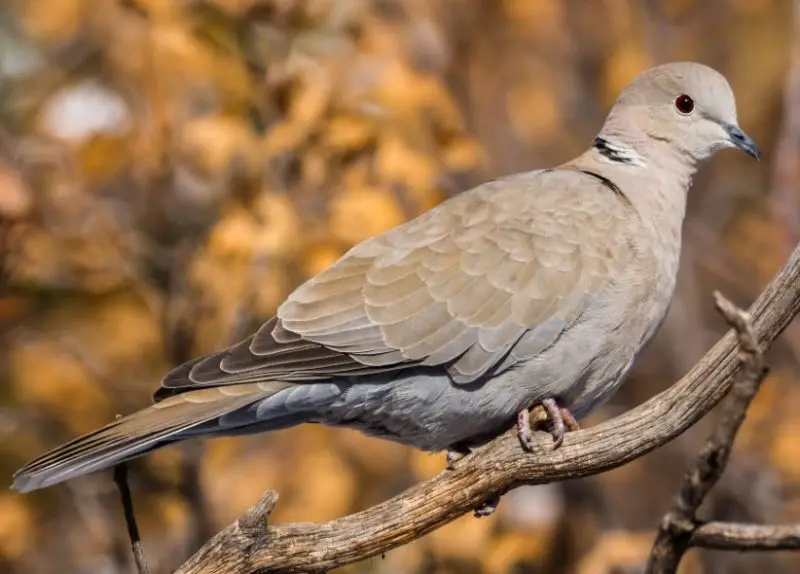
The Eurasian Collared-Dove is a fairly recent addition to Maryland’s bird populations. It has a pale gray body, a distinctive black collar around the nape, and pinkish tones on the chest. Its square tail with white tips and cooing calls are unmistakable for birders familiar with this species.
Adult Eurasian Collared-Doves measure 12–14 inches long with a wingspan of about 18–20 inches. They are slightly larger than Mourning Doves and tend to move in flocks, often congregating on telephone wires, rooftops, or in open fields. Their smooth, gliding flight contrasts with the rapid wingbeats of Mourning Doves.
This species feeds primarily on seeds, grains, and occasionally small fruits. They are frequent visitors to bird feeders and adapt easily to suburban and urban environments. Their spread across Maryland has been rapid over the past few decades, often outnumbering native Mourning Doves in some areas.
Breeding occurs year-round in Maryland, with peak activity in the spring. Nests are simple platforms of twigs placed in trees, shrubs, or even on human-made structures. Both parents care for the young, which fledge quickly, allowing multiple broods each year.
White-winged Dove (Zenaida asiatica)
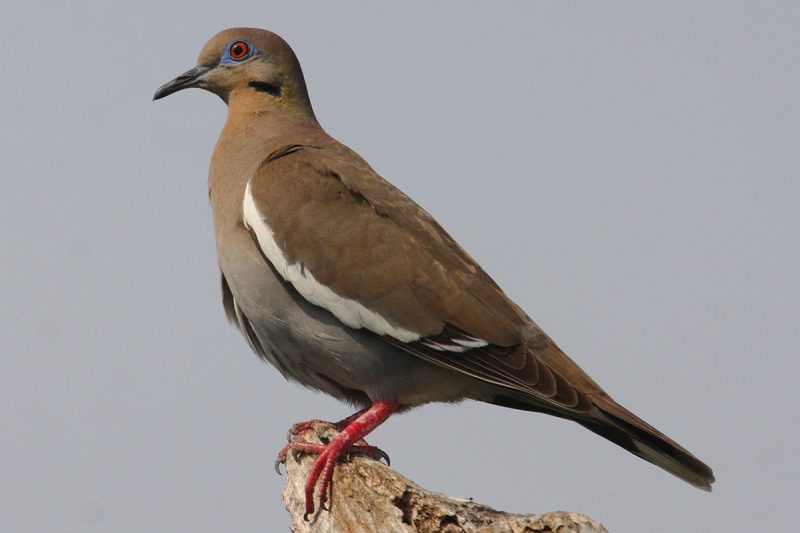
The White-winged Dove is a rare visitor to Maryland, typically appearing during migration or unusual weather events. Its gray-brown body is accented with a distinctive white wing stripe visible in flight and a pale blue eye-ring that stands out up close. Its soft cooing differs slightly from the mournful tone of Mourning Doves.
White-winged Doves are slightly larger than Mourning Doves, measuring 11–14 inches in length with a wingspan of 18–22 inches. Their strong, direct flight is accompanied by rapid wingbeats. When flying, the bright white wing patches are the easiest way to spot this species from a distance.
These doves primarily feed on seeds, grains, and fruits, often foraging on the ground or in shrubs. In Maryland, sightings are uncommon, and they are mostly recorded along the Eastern Shore or in southern counties during late summer and fall migration.
Breeding behavior is similar to other doves, with nests made of twigs in trees or shrubs. Both parents incubate eggs and feed the chicks. While Maryland sightings are rare, birders often keep a keen eye out for this striking species, especially in southern and coastal regions.
Rock Pigeon (Columba livia)
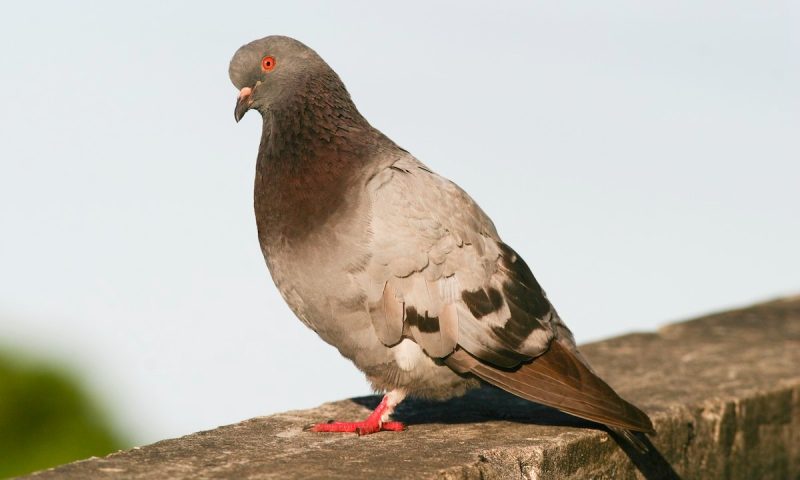
The Rock Pigeon, commonly called the city pigeon, is widespread across Maryland, especially in urban areas. It has a stout body, grayish-blue plumage with iridescent green and purple on the neck, and two dark wing bars. Its adaptability to human environments has allowed it to thrive in cities and towns.
Rock Pigeons are medium to large, measuring 11–14 inches long with a wingspan of 23–28 inches. Their strong, direct flight and quick wingbeats make them highly agile in urban airspace. Feral populations can form large flocks, often seen roosting on building ledges or bridges.
These pigeons primarily feed on seeds, grains, and food scraps from humans. They are highly social, often congregating in parks, town squares, and parking lots. Their cooing is deeper and more resonant than that of Mourning or Eurasian Collared-Doves.
Breeding occurs throughout the year in Maryland, with nests placed on ledges, roofs, and other sheltered areas. Pairs usually raise two chicks per brood, and multiple broods per year are common. Their close association with humans makes them one of the most familiar birds to Maryland residents.
Comparison of Doves in Maryland
Species |
Size (Length / Wingspan) |
Habitat |
Diet |
Identification Markers |
|---|---|---|---|---|
Mourning Dove (Zenaida macroura) |
12–14 in / 17–18 in |
Open fields, suburban areas, parks, backyards |
Seeds, grains, cracked corn |
Slender gray-brown body, long pointed tail, black wing spots, soft mournful coo |
Eurasian Collared-Dove (Streptopelia decaocto) |
12–14 in / 18–20 in |
Suburban areas, towns, open fields |
Seeds, grains, small fruits |
Pale gray body, black collar on nape, square tail with white tips, smooth gliding flight |
White-winged Dove (Zenaida asiatica) |
11–14 in / 18–22 in |
Rare visitor, usually coastal or southern Maryland |
Seeds, grains, fruits |
Gray-brown body, white wing stripe visible in flight, pale blue eye-ring |
Rock Pigeon (Columba livia) |
11–14 in / 23–28 in |
Urban areas, cities, towns |
Seeds, grains, human food scraps |
Grayish-blue body, iridescent green/purple neck, two dark wing bars, stout build |
Best Time and Places to Spot Doves in Maryland
Observing doves in Maryland can be a rewarding experience, especially if you know where and when to look. Mourning Doves and Eurasian Collared-Doves are most commonly seen in open fields, parks, suburban yards, and along roadsides throughout the state. Rock Pigeons thrive in cities and towns, often around buildings, bridges, and town squares. White-winged Doves are rare visitors, usually spotted in southern counties or along the Eastern Shore.
Spring and summer are the peak times to see doves actively feeding, nesting, and raising their young. During this period, Mourning Doves are particularly vocal in the mornings and evenings. Eurasian Collared-Doves may also appear year-round, but they are easiest to spot in late spring when they form loose flocks. Rock Pigeons remain abundant throughout the year, while White-winged Dove sightings are most likely during migration periods in late summer or fall.
Maryland’s mix of rural fields, suburban neighborhoods, and urban environments provides ample viewing opportunities. Bird feeders stocked with seeds can attract Mourning Doves and Eurasian Collared-Doves, while city parks and building ledges are ideal for Rock Pigeons. Coastal regions and southern counties are the best chance to spot a rare White-winged Dove.
Frequently Asked Questions about Doves in Maryland
What is the easiest dove to spot in Maryland?
The Mourning Dove is the most common and widely distributed species in Maryland, making it the easiest to observe in fields, parks, and backyards.
Are Eurasian Collared-Doves invasive?
Yes, Eurasian Collared-Doves are considered non-native and have rapidly expanded their range across Maryland and other U.S. states.
Can I attract doves to my backyard?
Yes, providing seeds like sunflower, millet, or cracked corn in a feeder will attract Mourning Doves and Eurasian Collared-Doves. Make sure to offer water nearby.
When are White-winged Doves most likely to appear in Maryland?
White-winged Doves are rare visitors, typically appearing in southern counties or along the Eastern Shore during late summer and fall migration.
Do Rock Pigeons breed year-round?
Yes, Rock Pigeons can breed throughout the year, especially in urban environments where food and shelter are readily available.






